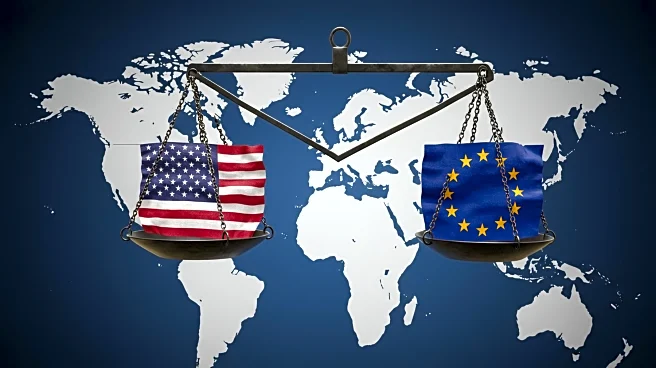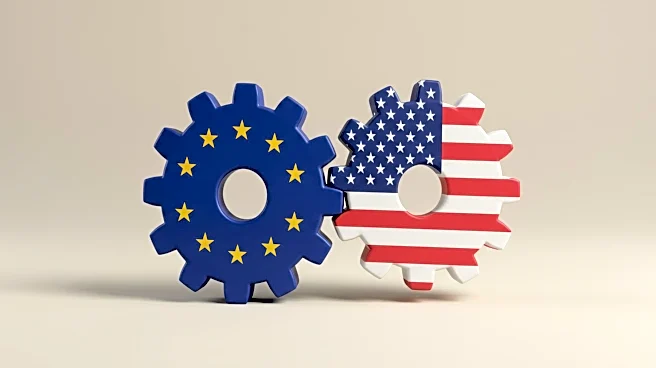What is the story about?
What's Happening?
The United States and European Union have announced an updated trade framework, providing some clarity for sectors such as pharmaceuticals, lumber, and semiconductors with a cap of 15% tariffs. However, the deal has left many European businesses uncertain about its long-term reliability. The agreement, which follows a previous framework from July, lacks detailed enforcement provisions and could be subject to future changes. Concerns persist about the potential for escalating tensions and the impact on small and medium-sized enterprises due to unclear customs procedures.
Why It's Important?
The trade deal is significant as it attempts to stabilize transatlantic trade relations, which have been volatile under President Trump's administration. The agreement aims to enhance economic cooperation but leaves many questions unanswered, particularly regarding the rules of origin and tariff rate quotas. European businesses, especially in sectors like pharmaceuticals, remain wary of the deal's fragility and the possibility of abrupt policy shifts. The deal's success or failure could have substantial implications for U.S.-EU economic ties and global trade dynamics.
What's Next?
The deal's future will depend on its implementation and the ability of both parties to address outstanding issues. The EU Trade Commissioner has indicated that the framework is just the beginning, suggesting potential modifications. Businesses will need to monitor developments closely and adapt their strategies accordingly. The lack of enforcement provisions means that changes could occur at the discretion of the U.S. President, adding to the uncertainty faced by European companies.
AI Generated Content
Do you find this article useful?











